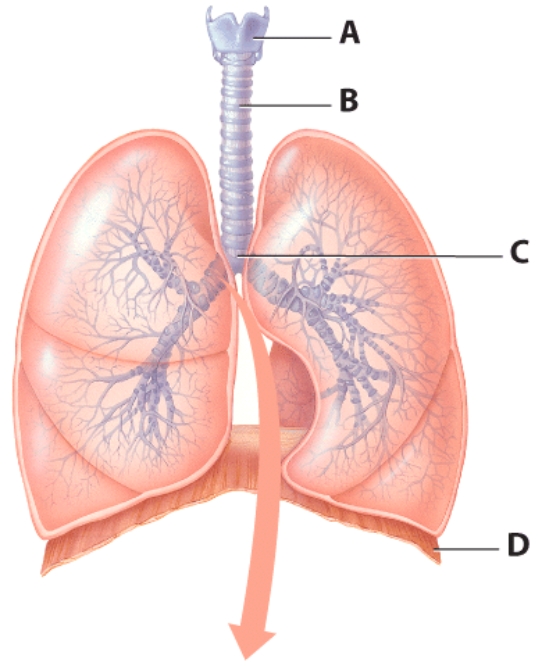A) Parainfluenza virus
B) Rhinoviruses
C) Adenoviruses
D) all of these choices
Correct Answer

verified
Correct Answer
verified
Multiple Choice
Whooping cough treatment includes:
A) administration of antitoxin
B) erythromycin
C) supportive treatment for symptoms
D) all of these choices
Correct Answer

verified
Correct Answer
verified
Multiple Choice
Which of the following statements about diphtheria is incorrect?
A) A prophage carries the exotoxin producing gene.
B) An epidemic of diphtheria killed numerous people in the former Soviet Union.
C) The bacteria are Gram-negative rods.
D) The bacteria are in a palisade arrangement and have metachromatic granules.
Correct Answer

verified
Correct Answer
verified
Multiple Choice
Which of the following statements about normal microflora of the respiratory system is incorrect?
A) The presence of Haemophilus in the pharynx does not indicate disease.
B) About 1/3 of the population carries Staphylococcus aureus in their nasal cavity.
C) Coccidioides immitis is a harmless part of the microflora.
D) Nasal carriers of Staphylococcus aureus can easily spread it to other individuals.
Correct Answer

verified
Correct Answer
verified
Multiple Choice
Consumption is another name for _____.
A) over-eating
B) diphtheria
C) tuberculosis
D) pneumonia
Correct Answer

verified
Correct Answer
verified
Multiple Choice
Pontiac fever is a mild form of _____.
A) tuberculosis
B) pneumonia
C) legionellosis
D) diphtheria
Correct Answer

verified
Correct Answer
verified
Multiple Choice
Bronchial pneumonia differs from lobar pneumonia in that _____.
A) it only affects old people
B) it starts as a secondary infection
C) it lacks the fibrin deposits
D) two of these choices
Correct Answer

verified
Correct Answer
verified
Multiple Choice
Which of the following statements about streptococcal pharyngitis is incorrect?
A) Dogs and other family pets can be carriers of Streptococcus pyogenes.
B) Diagnosis takes at least 24 hours for the culture results to be reported.
C) Clinically the throat is inflamed and the adenoids and lymph nodes in the neck swell.
D) If treatment is delayed, rheumatic fever may develop.
Correct Answer

verified
Correct Answer
verified
Multiple Choice
The following statements about tuberculosis are all true except:
A) Mycobacterium avium-intracellulare causes TB in AIDS patients
B) the pathogens have long generation time (12-18 hours)
C) Mycobacterium tuberculosis is the most common causative agent
D) the pathogens are very sensitive to drying and die quickly in the environment
Correct Answer

verified
Correct Answer
verified
Multiple Choice
Spelunkers are cave-exploring enthusiasts,to which fungal pathogen might they become exposed?
A) Coccidioides immitis
B) Cryptococcus neoformans
C) Histoplasma capsulatum
D) Aspergillus fumigatus
Correct Answer

verified
Correct Answer
verified
Multiple Choice
Amphotericin B is used to treat serious systemic fungal infections for all of the following except
A) Coccidioidomycosis
B) Cryptococcosis
C) Pneumocystis pneumoniae
D) Aspergillosis
Correct Answer

verified
Correct Answer
verified
Multiple Choice
The upper respiratory tract consists of the:
A) pharynx
B) nasal cavity
C) primary bronchi
D) two of these choices
Correct Answer

verified
Correct Answer
verified
Multiple Choice
Which of the following are used in the treatment or prevention of diphtheria?
A) Antibiotics
B) Vaccination
C) Antitoxin
D) All of these choices
Correct Answer

verified
Correct Answer
verified
Multiple Choice
Which of the following statements related to rhinoviruses is incorrect?
A) Rhinoviruses grow best at 33 - 34ᵒC.
B) Antibiotics are not useful in treating the common cold.
C) There are at least 113 different Rhinoviruses.
D) Rhinoviruses are very resistant to acid.
Correct Answer

verified
Correct Answer
verified
Multiple Choice
Which is characterized by a pseudomembrane forming in the throat?
A) Diphtheria
B) Pertussis
C) Pharyngitis
D) Laryngitis
Correct Answer

verified
Correct Answer
verified
Multiple Choice
Where does laryngitis occur? 
A) D
B) C
C) B
D) A
Correct Answer

verified
Correct Answer
verified
Multiple Choice
Otitis media is caused most often by:
A) Streptococcus pneumoniae
B) Staphylococcus aureus
C) Haemophilus influenzae
D) two of these choices
Correct Answer

verified
Correct Answer
verified
Multiple Choice
Respiratory syncytial virus:
A) is most common cause of lower respiratory tract infections in infants under 1 yr of age
B) is a pneumonia-like disease transmitted to humans by birds
C) usually a skin disease but sometimes disseminated to the lungs
D) two of these choices
Correct Answer

verified
Correct Answer
verified
Showing 41 - 58 of 58
Related Exams